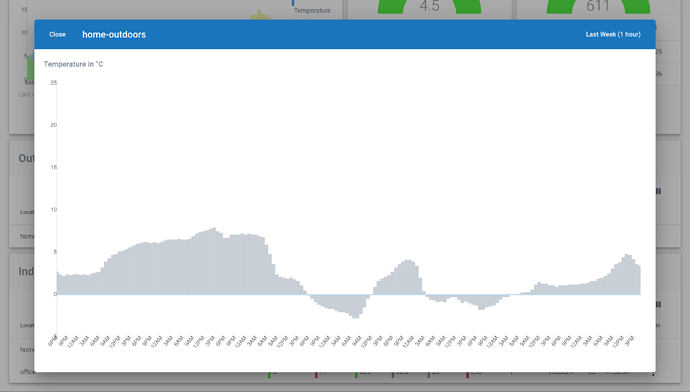So uh. I have the kit outdoors now, and there’s certainly some issues. Maybe I haven’t installed it correctly, but the temperatures are way off from the official weather numbers.
Here’s a screenshot from the last week, hourly:
There you can see it’s mostly above zero all week, and always above zero for the past 24h. The weather is actually very different. According to the official report, temperature has not gone above -3C in the last 24h, and it has barely gone above freezing for the past week.
More specifically, the max in my airgradient dashboard is 7.9C but the max according to the weather office is 1.9C! A 6C difference… I would show more graphs, but Discourse thinks I’m a new users and i can’t :p.
So there’s something wrong with the sensor… I wonder if the LED might be heating up the enclosure, it’s so bright!
 .
. .
.

